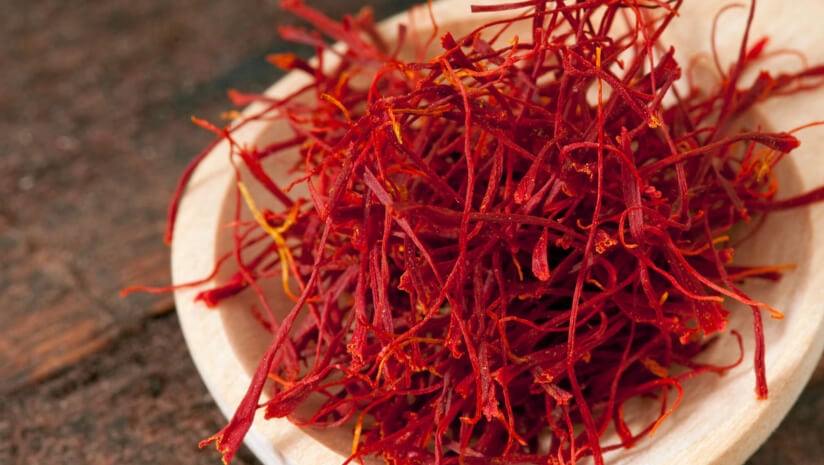Writing in the International Journal of Molecular Sciences, researchers at the University of Genoa and the Fondazione per la Macula Onlus in Italy found that the combination may also address diabetic macular edema and central serous chorioretinopathy, a condition where fluid accumulates under the retina, causing visual distortions.
“Several herbal drugs and their extracts are recognized for their antioxidant proprieties and are the objects of a great deal of research in order to find alternatives to pharmacological treatments for controlling symptoms and preventing or slowing the progression of ocular diseases,” said Alessandra Puddu, an author on the paper. “Combining different antioxidant compounds may improve the beneficial effects of a single treatment.”
Oxidative stress
Oxidative stress is connected to disease development and can occur when there is an imbalance of cells that produce excessive reactive oxygen species (ROS) and/or have insufficient antioxidant defenses to counteract them. This leads to cellular damage.
The vicious cycle of ROS is partly caused by light exposure and the presence of poly-unsaturated fatty acids (PUFAs) in the eye’s photoreceptors. Oxidative stress can threaten retinal cell function which may activate inflammatory cells.
The retina tends to be more susceptible to oxidative stress due to an “imbalance between reactive species production and the ability to scavenger them,” the researchers explained.
Some herbs and their extracts can have antioxidant properties.
“The use of natural compounds in topical preparations and as dietary supplements may be a beneficial alternative to pharmacological treatments to control symptoms and to prevent or slow the progression of ocular diseases,” the researchers wrote.
Mainly produced in Mediterranean countries, saffron is widely studied for its anti-inflammatory elements due to its primary bioactive components, crocetin, a carotenoid compound and crocin. Elderberry is a species of flowering plants with several health functions, and melilotus, a species of legume native to Eurasia and North America, which has been used in herbal medicine for centuries. The drying process of the latter plant leads to beneficial biological activity.
The researchers explored the molecular mechanism of saffron and whether it would lead to protective effects against oxidative damage in retinal pigment epithelial cells, a layer of cells in the retina that play a crucial role in maintaining photoreceptor health and visual function. They then examined saffron’s association with elderberry and melilotus and whether together they would exhibit significant additive antioxidant effects.
Study details
In the study, the researchers tested saffron’s ability to protect against oxidative damage to ARPE-19, the retinal pigment epithelial cells and whether combining the saffron with elderberry and melilotus would have additional benefits.
“ARPE-19 cells were pretreated with saffron alone or in a mix containing saffron, elderberry and melilotus,” the researchers wrote.
Then they exposed hydrogen peroxide (H2O2)-a reactive oxygen species-to those ARPE019 cells for three hours.
“Afterwards, we evaluated cell viability, oxidative stress and inflammatory status. Our results showed that H2O2 reduced cell viability and total glutathione levels, while increasing caspase-3, caspase-1 and LDH activity,” the researchers explained.
H2O2 led to ROS production, glutathione oxidation and to the section of IL-1β, a potent pro-inflammatory cytokine. Pretreating with saffron alone, or with the combination, hampered these detrimental effects, improving cell viability, reducing oxidative stress and enhancing SOD2 expression, an enzyme that is instrumental in neutralizing superoxide radicals.
The researchers added: “Pretreatment with the mix activated the NRF2 pathway and was more effective than saffron alone in preventing caspase-1 activation.”
The NRF2 pathway is also an important cellular defense mechanism against oxidative stress and inflammation. Additionally, caspase-1 activation is responsible for processing pro-inflammatory cytokines like IL-1β into their active form. Caspase-1 can have both beneficial and detrimental effects on the immune system.
“Our results demonstrate that both saffron alone and its combination with elderberry and melilotus are able to counteract the damaging effects of hydrogen peroxide,” said paper authors Drs. Davide C. Maggi and Massimo Nicolò, M.D. and Ph.D.
“However, the mix is more effective in preventing inflammation, suggesting that the combination of different bioactive compounds may give stronger antioxidant protection…. Overall, our results suggest that drug formulations containing a combination of saffron, elderberry and melilotus, whether developed for topical use or as dietary supplement, may offer potential benefits in the prevention and treatment of retinal degenerative diseases.”
Cassandra Stern contributed reporting.
Source: International Journal of Molecular Sciences, doi: 10.3390/ijms26041496, “Combination of Saffron (Crocus sativus), Elderberry (Sambucus nigra L.) and Melilotus officinalis Protects ARPE-19 Cells from Oxidative Stress”, Authors: A. Puddu et al.

